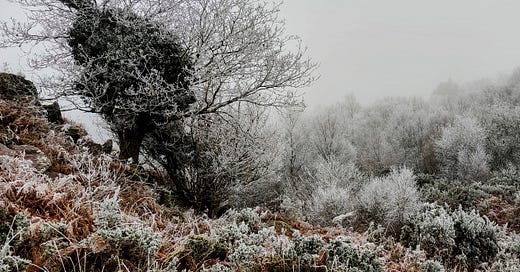The Oak and the Christmas Rose
Down at the furthest corner of our land, beneath a rocky outcrop that juts over the wooded creek below, a lone oak grows. I don’t know how old it is. It is small, as though stunted by the weather and the rocks, anchored precariously into the slope and split in two at its base, its twin trunks wrapped with ivy as thick as my wrist, and it heaves bravely against the wind. But it must have seen many storms.
The oak tells a story. Trees have a presence, you know, if you quiet your own and feel for it. They breathe, and hum with stories of howling winds and of salty seas carried in on raindrops and feathered wings. They tell of earth and decay and rebirth and the old ones hold an ancient wisdom, an earth magic that pours up through their roots from deep below. Connected by an underground hyphal network, they share their stories through the soil and the forest reverberates with the songs of a thousand souls.
Keep reading with a 7-day free trial
Subscribe to Wild Irish Farmstead to keep reading this post and get 7 days of free access to the full post archives.



